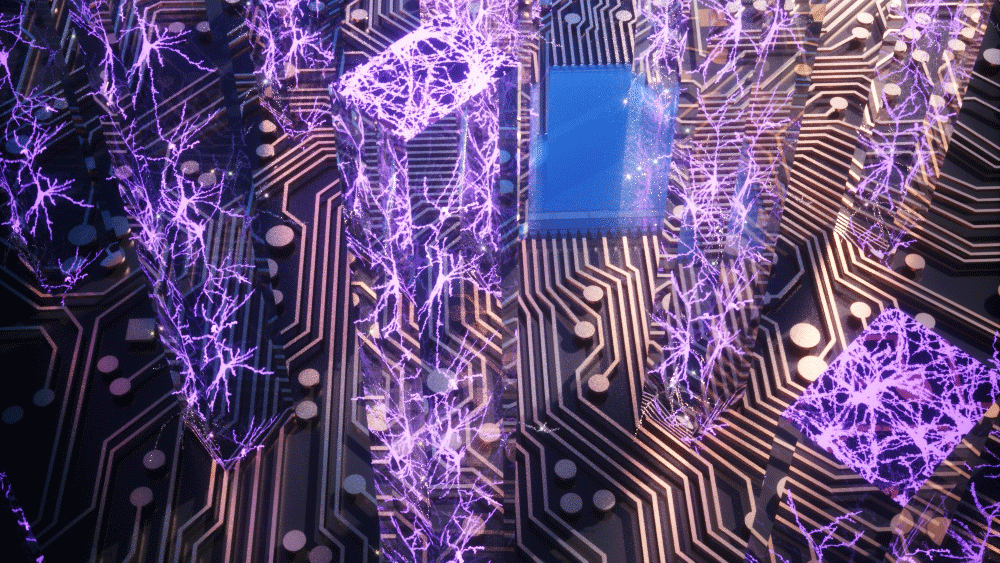
As society adjusts to become information-focused, conventional computing is approaching its fundamental limits. The need for computing to become faster and more energy-efficient is exponentially increasing.
Texas A&M University is set to lead its first Department of Energy (DOE) funded Energy Frontier Research Center (EFRC). The center will focus on Reconfigurable Electronic Materials Inspired by Nonlinear Neuron Dynamics (REMIND), an initiative that strives to transform computing to behave more like a human brain for rapid and efficient processing.
Dr. R. Stanley Williams, professor in the Department of Electrical and Computer Engineering, will serve as the director of the EFRC, and Dr. Sarbajit Banerjee, professor in the Department of Materials Science and Engineering and the Department of Chemistry, will serve as the associate director.
“We are at a crossroads for the future of computing,” said Banerjee. “Self-driving cars, networked grids and personalized medicine are on the rise, all of which require massive amounts of energy. A whole new approach that focuses on brain-like computing is essential to meet the needs of society.”
Modern computers excel at various essential functions, like high-precision arithmetic and solving known equations. However, they perform poorly when it comes to natural human abilities such as real-time learning, concept identification and decision making.
This ability to process information is possible because human brains have nerve cells (neurons) that continuously compare incoming stimuli with previously learned data. Neurons communicate with one another via electrical and chemical signals through connections called synapses that store memories. Although the individual biological steps are slow compared to those in transistors, enormous numbers of them operate simultaneously to perform sophisticated computation with energy-efficient orders of magnitude superior to the most advanced electronic computers.
“Let’s say we are looking at a picture of a dog,” said Banerjee. “A human brain can almost immediately recognize the dog itself, its type and relative age. A computer will struggle with the basic recognition and may make a significant mistake while also using much more energy to do so.”
The researchers involved with the REMIND initiative are discovering ways to emulate human neurons and synapses in electrical circuits by designing, creating and assembling materials that exhibit tunable nonlinear responses to incoming electrical signals, such as thresholding, amplification, integration and embedded memory. In other words, they are emulating the human brain’s processing system and attempting to assemble it into a highly efficient and capable computer.
“Our center seeks to uncover the foundational science of artificial neurons and synapses,” said Williams. “We are looking forward to solving a generational challenge that will transform the future of computing.”
If successful in implementing these techniques, their findings could significantly reduce the amount of energy consumption used by computers, helping combat the energy crisis.
“We are focused on taking computers from calculating mathematical functions to learning and making decisions in uncertain and changing environments,” said Banerjee. “We’re discovering the fundamental chemistries and materials for manufacturing the next generation of brain-like computing.”
The DOE recently announced the EFRC awards to develop technologies that can transform energy production and reduce harmful emissions. The research efforts will have 54 universities and 11 national labs in 34 states contributing.
The EFRC is a collaboration among the College of Engineering, the Department of Chemistry, the Texas A&M Engineering Experiment Station, the National Renewable Energy Laboratory, Lawrence Berkeley National Laboratory and Sandia National Laboratories. In addition to Banerjee and Williams, REMIND researchers include Dr. Raymundo Arroyave, Dr. Matt Pharr, Dr. Xiaofeng Qian and Dr. Patrick Shamberger from the materials science and engineering department, Dr. Perla Balbuena from the Artie McFerrin Department of Chemical Engineering, and Dr. Marcetta Darensbourg and Dr. Kim Dunbar from the Department of Chemistry. The team represents the breadth and depth of expertise needed to tackle this complex challenge spanning multiple disciplines.